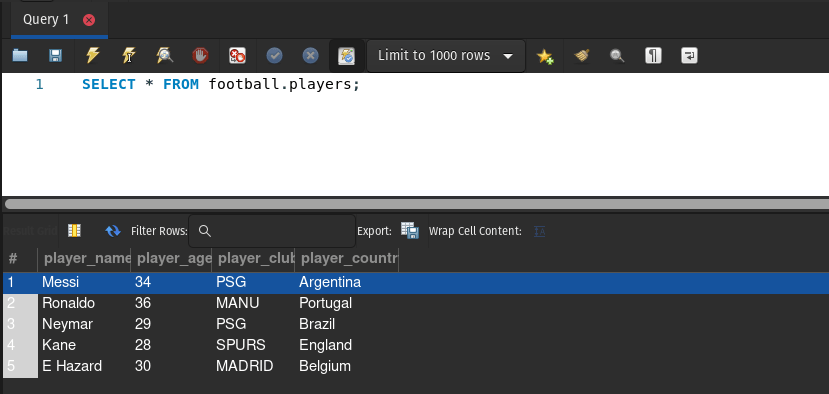
- #Connected database workbench spinning on query how to#
- #Connected database workbench spinning on query install#
- #Connected database workbench spinning on query pro#
- #Connected database workbench spinning on query code#
- #Connected database workbench spinning on query password#
When you first launch it you will need to create a new session file using the following information.
#Connected database workbench spinning on query install#
Fill in the following connection parameters:Ĭlick “Connect.” Connect to Database with MySQL Workbench Step 1ĭownload MySQL Workbench and install it. You can find your MySQL username, password, and database name in MyKinsta under Sites > sitename > Info. When you first launch it you will need to create a new connection.
#Connected database workbench spinning on query pro#
Step 1ĭownload Sequel Pro and install it.
#Connected database workbench spinning on query how to#
Connect to Database with Sequel Proīelow is an example of how to connect to your database directly using Sequel Pro. Step 3Ĭlick Open and it should prompt you to trust the host and add the key to your registry. Then use the following information on the SSH tunnel tab.Īgain, all of the information above can be obtained from MyKinsta under Sites > sitename > Info. You will then need to download Plink.exe (PuTTY Link, a command-line connection tool) and specify the location under the Advanced tab. Connect to Database with HeidiSQLīelow is an example of how to connect to your database directly using HeidiSQL. After successfully connecting, you’ll see the SQL interface below which lets you query your remote database directly. You’ll be prompted for your database password, so be sure to have that handy. mysqlsh -host=127.0.0.1 -port=3307 -u database_username -p -sqlįor our kinstalife site, we would use the command below. To test this, you can use the command below for MySQL Shell in a different terminal window. If you haven’t already, you’ll need to install MySQL Shell locally. If you do not see an “incorrect password” message, that means you’re good to go! SSH tunnel in macOS.Īt this point, your Mac is set up to connect to your remote database via 127.0.0.1:3307.
#Connected database workbench spinning on query password#
Input your SFTP/SSH password when prompted, and press “Enter”. ssh _host -p ssh_port -L 3307:127.0.0.1:3306 -Nįor the kinstalife site in the screenshot above, the command below can be used to start the SSH session.

While it’s possible to specify 3306 ( the default port for MySQL) for both ports, we recommend using another port number like 3307 in case there is already a local instance of MySQL running. This command binds your local port 3307 to port 3306 on the remote server containing your database and performs the necessary port forwarding. Be sure to replace “ssh_username”, “ssh_host”, and “ssh_port” with your site’s settings. In macOS, launch Terminal and run the command below. To connect to your database via SSH tunnel, you’ll need a few key pieces of information from your site’s Info tab in MyKinsta.Ĭredentials for setting up SSH tunneling can be found in MyKinsta. This allows you to use local database administration tools like MySQL Shell to make changes to a MySQL database in a secure fashion. If you prefer to work exclusively in the command line, you can connect to your Kinsta database directly via an SSH tunnel. In this tutorial, you have learned how to connect to the MySQL Server using mysql command-line client and MySQL Workbench.You can connect to your WordPress database using phpMyAdmin, which is accessible from within MyKinsta. MySQL Workbench display with the current schemas and a pane for entering queries: Click the newly created connection under MySQL Connections to connect to the MySQL Server: Click the OK button to save the connection.

Then click the OK button if the connection is established successfully. Click the Test Connection button to test if the connection to the MySQL Server is successful or not.

You enter the password and click the OK button. button to enter the password for the provided user account. If you use a different user account, you can change it in the Username textbox. You can name it whatever makes sense to you. Enter the connection name e.g., Localhost. Just click the + button in next to the MySQL Connections to continue. You can connect to a MySQL Server using the Database > Connect to Database… menu or click the + button that locates next to the MySQL Connections.
#Connected database workbench spinning on query code#
Code language: SQL (Structured Query Language) ( sql ) Connect to MySQL Using MySQL Workbench


 0 kommentar(er)
0 kommentar(er)
